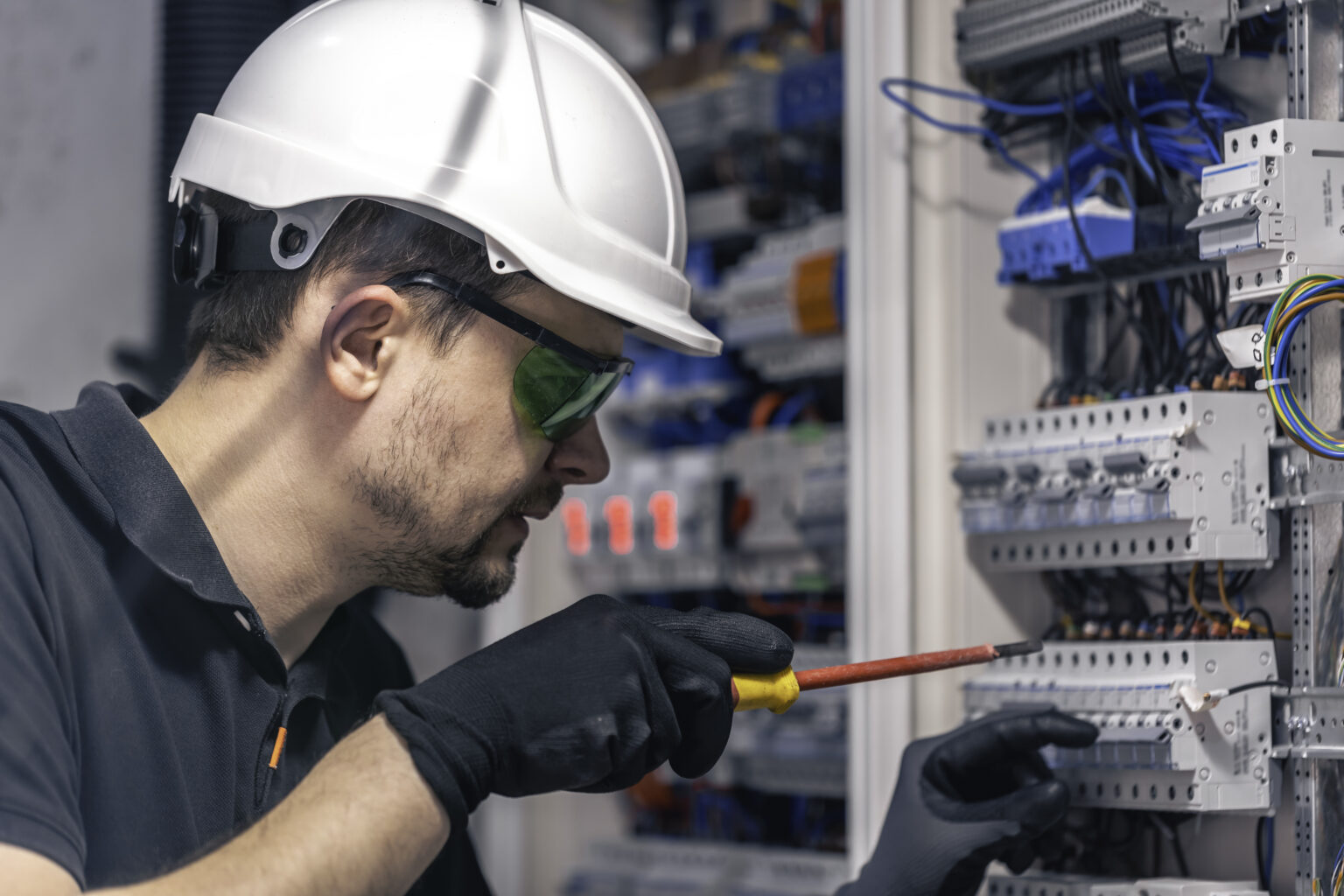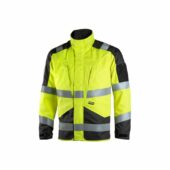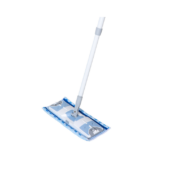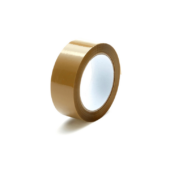The electronics manufacturing industry demands precision, contamination control, and safety. Selecting the right cleanroom and sterile gloves ensures product integrity, worker protection, and compliance with industry standards. In this guide, we break down how to choose the ideal gloves for electronics manufacturing, addressing specific requirements and providing links to relevant resources.
For an overview of sterile gloves across various industries, explore our Comprehensive Buyer’s Guide to Cleanroom & Sterile Gloves.
Why Are Sterile Gloves Essential in Electronics Manufacturing?
In electronics manufacturing, Microscopic particles or static discharge may affect the performance of sensitive components. Sterile gloves, also known as cleanroom gloves, act as a barrier against contamination and ensure precision handling. Choosing the right gloves minimizes risks and aligns with industry standards like ISO 14644 for cleanroom environments. For more details about ISO 14644 standards, visit the ISO Official Website.
Key Benefits of Sterile Gloves in Electronics:
- Contamination Control: Prevent particles, oils, and residues from transferring to electronic components.
- Electrostatic Discharge (ESD) Safety: Protect sensitive devices from static-related damage.
- Comfort and Dexterity: Ensure precision during intricate assembly tasks.
Factors to Consider When Choosing Sterile Gloves
1. Material
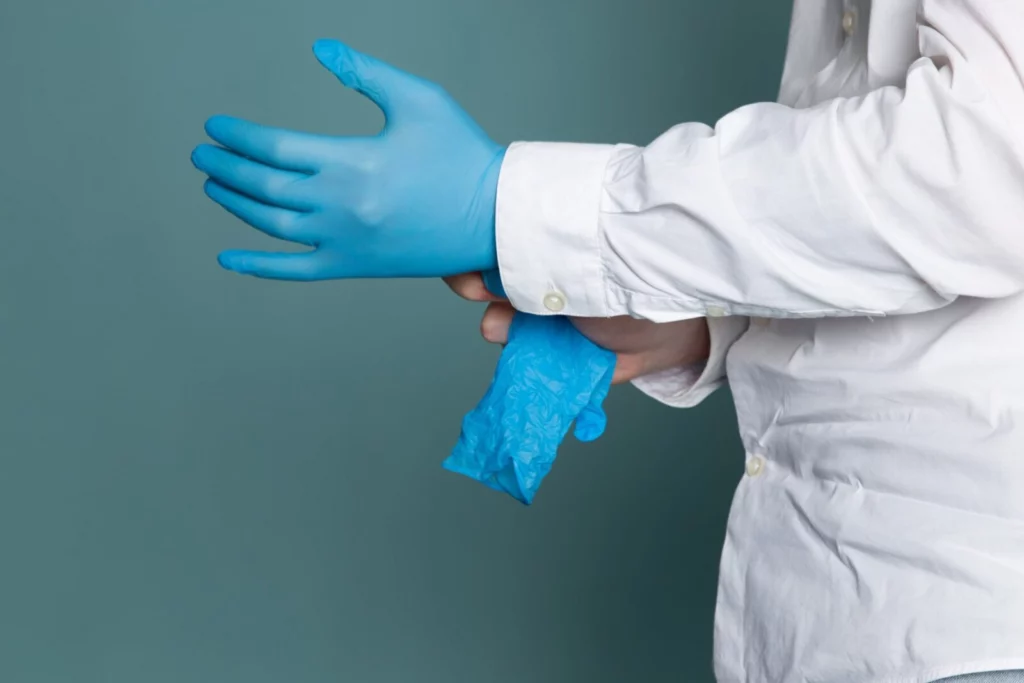
The material determines glove performance in terms of contamination control, ESD safety, and wearer comfort.
| Material | Advantages | Disadvantages |
| Nitrile | Durable, chemical-resistant, low particle shedding, latex-free (safe for allergies), ESD protection | Less tactile sensitivity compared to latex |
| Latex | Exceptional elasticity and tactile sensitivity, suitable for tasks requiring extreme precision | Potential for latex allergies, higher particle shedding, limited ESD protection |
| Vinyl | Affordable, suitable for low-risk environments | Lower durability, minimal chemical resistance |
Explore Nitrile Gloves Options for durability, chemical resistance, and contamination control in critical cleanroom tasks. For budget-friendly, non-critical environments, check out Vinyl Gloves as a cost-effective alternative.
2. Cleanroom Classification
Match gloves to the cleanroom’s classification to ensure compliance. Cleanroom classifications are determined based on the number of particles per cubic metre and other environmental controls, as defined by ISO standards. For more details, visit the ISO Official Guidelines. Gloves are categorized based on the number of particles per cubic metre (e.g., ISO Class 3 or 5).
| Cleanroom Class | Applications | Recommended Glove Material |
| ISO Class 3 | Semiconductor manufacturing | Nitrile |
| ISO Class 5 | Assembly of sensitive devices | Nitrile, Vinyl |
3. Powder-Free Coating
Always choose powder-free sterile gloves to prevent contamination of electronics with powder particles.
4. ESD Protection
Select gloves that meet ESD safety requirements, often indicated by an ESD symbol on the packaging. These gloves are designed to dissipate electrostatic charges.
5. Comfort and Fit
Proper fit ensures precision and reduces hand fatigue. An improper fit may reduce dexterity, cause discomfort, or increase the likelihood of tears or slips. Use this sizing chart to find the correct glove size:
| Hand Circumference (cm) | Size |
| 17 – 18.5 | Small |
| 18.5 – 20.5 | Medium |
| 20.5 – 23 | Large |
| 23 – 25.5 | X-Large |
Best Practices for Using Sterile Gloves
Proper Donning and Doffing
- Donning: Ensure gloves are donned in a clean environment using proper techniques to avoid contamination.
- Doffing: Remove gloves carefully to prevent transferring contaminants.
Single-Use Policy
Only use gloves once to maintain sterility and avoid particle accumulation.
Disposal
Dispose of gloves as per local regulations to minimize environmental impact and ensure compliance with cleanroom standards. For detailed guidance, refer to European Waste Regulations or your local environmental authority’s guidelines.
Where to Buy the Right Sterile Gloves
Finding reliable and high-quality gloves is critical. Visit our Cleanroom & Sterile Gloves Collection for a curated selection of gloves designed for precision industries like electronics manufacturing.
For related needs, explore:
- Surface Cleaners to maintain cleanroom standards.
- Degreasers for pre-cleaning equipment.
Additional Resources
For a deeper dive into related glove types and uses:
- How to Choose the Best Disposable Gloves – A Buyer’s Guide
- How to Choose the Right Nitrile Gloves – A Buyer’s Guide
- Vinyl Gloves: The Affordable Solution for Industrial Safety
Frequently Asked Questions (FAQ)
Sterile gloves are manufactured and packaged under strict conditions to meet sterility requirements and are free of microorganisms. Non-sterile gloves are generally used for tasks that do not require sterility, such as general cleaning or handling less sensitive components.
No, sterile gloves are designed for single use only. Reusing sterile gloves can impact their sterility, lead to potential contamination, and may not align with cleanroom standards.
The shelf life of sterile gloves is typically 3 to 5 years from the date of manufacture, as indicated on the packaging, provided they are stored in a cool, dry environment away from direct sunlight and chemicals.
Look for gloves explicitly labeled as ESD-safe or marked with an ESD symbol on the packaging. These gloves are specifically designed to dissipate electrostatic charges.
Not necessarily. The requirement depends on the cleanroom classification and the sensitivity of the components being handled. For lower cleanroom classifications or non-critical tasks, non-sterile gloves may suffice.
Ensure gloves meet standards like:
ISO 14644 for cleanroom environments.
ASTM D6319 for nitrile gloves or ASTM D3578 for latex gloves.
ESD certification for static protection.
Not necessarily. The requirement depends on the cleanroom classification and the sensitivity of the components being handled. For lower cleanroom classifications or non-critical tasks, non-sterile gloves may suffice.
Ensure gloves meet standards like:
ISO 14644 for cleanroom environments.
ASTM D6319 for nitrile gloves or ASTM D3578 for latex gloves.
ESD certification for static protection.
Choose gloves with ergonomic designs, adequate elasticity, and proper fit. Opt for gloves with moisture-wicking inner linings or breathable materials to enhance comfort.
No, gloves must be matched to the specific ISO Class of the cleanroom. For example, gloves suitable for an ISO Class 3 cleanroom may not meet the standards for an ISO Class 5 cleanroom due to stricter particle control requirements in the former.
Store gloves in their original packaging in a temperature-controlled, dust-free environment. Avoid exposing them to moisture, extreme temperatures, or direct sunlight.
Disposable gloves contribute to plastic waste. To minimize the impact, choose gloves made from recyclable or biodegradable materials where possible, and follow proper disposal guidelines as per local regulations.
We hope this guide has provided valuable insights into selecting the ideal sterile gloves for electronics manufacturing. From understanding material options to ensuring compliance with cleanroom standards, every detail contributes to maintaining precision, safety, and product integrity in sensitive environments.
Explore our curated selection of Cleanroom & Sterile Gloves on Droppe, featuring trusted brands tailored to meet the stringent demands of your industry. Whether you’re sourcing gloves for semiconductor production or assembling intricate electronic components, we’re here to support your needs.
Have questions or need expert advice? Don’t hesitate to reach out—our team is ready to help you make confident, informed choices for your cleanroom and sterile glove requirements. For more in-depth guidance, visit the Cleanroom & Sterile Gloves Buyer’s Guide.
– The Droppe Team

